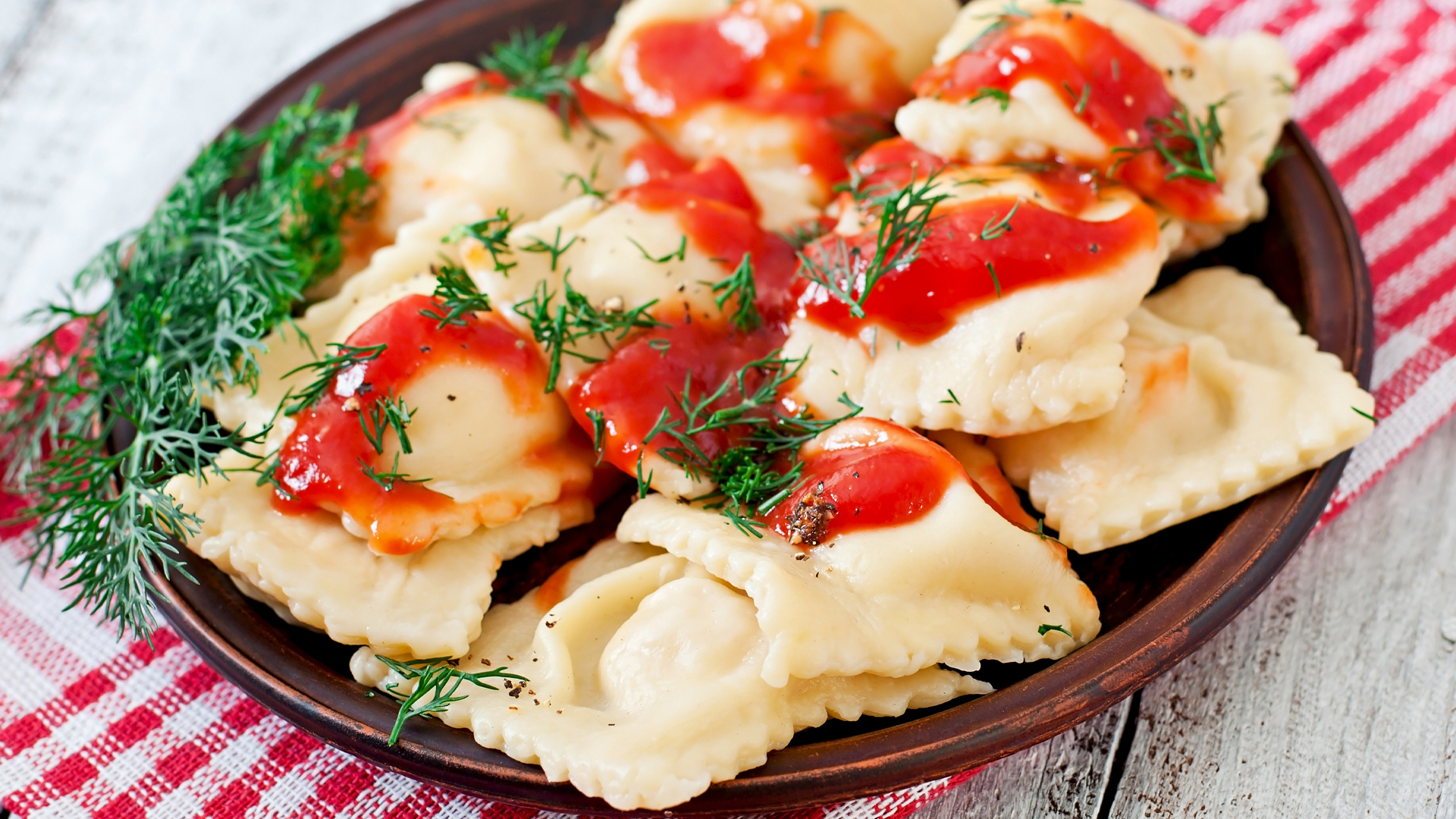Quite possibly the most recognizable stuffed pasta in the world, ravioli is an essential dish in Italian cuisine. Traditionally in Italy, ravioli are made at home and served on Sundays, important holidays, or other special occasions. However, in places like the United States, time and quality ingredients are not always readily available. Fortunately, it’s easy to find fresh-packed ravioli if you know where to look. America Domani turns to Nicola’s Marketplace, where handcrafted artisanal ravioli are made only using natural and pure ingredients. Chef Nicola has been serving and selling his famous ravioli since 2012 with recipes rich in family tradition, passed down from generation to generation.
While modern homemade or store-bought ravioli has become a staple in our homes, this stuffed pasta has a long history that has endured and evolved with time. Ravioli are named after the Italian word “riavvolgere” which means “to wrap. Each Italian region created its own version of ravioli - a dumpling, with filling sealed between two layers of thin pasta. Though it takes many shapes, including circular or semi-circular forms, the traditional form of ravioli is a square.

While the origins of ravioli origins are not well-known, the earliest mention of the stuffed pasta comes from 14th-century manuscripts. Francesco di Marco Datini, a merchant of Prato, had a recipe for ravioli that consisted of chopped blanched green herbs, fresh cheese, and beaten egg, then simmered in broth. After more than 600 years, this ancient recipe is nearly indistinguishable from contemporary ravioli enjoyed today. Food historians suggest that Sicilian and Maltese ravioli may precede northern Italian versions, using sheep’s milk ricotta or sheep’s milk cheese.
During 16th century Rome, ravioli is mentioned when Bartolomeo Scappi, a famous Italian Renaissance chef, served the stuffed pasta to a papal conclave of 1549. Unlike what you may easily find today, ravioli was not served with tomato sauce until the 16th century. Much like in 14th-century Italy, ravioli was still served al brodo (in broth) until tomatoes were introduced to Italy from the New World. Flash forward to the 20th century in the United States, ravioli became mass-produced and a fixture in the frozen section of the supermarket. Thanks to Chef Boyardee, easily accessible canned ravioli was introduced to the American market in the 1930s.
Ravioli is a humble yet important dish in Italian cuisine. The practice of making ravioli is still alive around the world, but today you will find pasta lovers getting more creative -- like our friends at Nicola’s Marketplace, who combine nostalgia and heritage with regional flavor combinations and local ingredients that honor a centuries-old tradition. Contemporary ways of ravioli-making are not always about replicating an exact family recipe but help maintain the larger Italian culinary scene and continuous gastronomical exchange.
Feeling hungry? Be sure to visit Nicola's online and use coupon code "AD20" to enjoy 20% off your order!
Think You Know All About Ravioli?
Arianna DiCicco
Arianna DiCicco is an educator and writer from California, born into an Italian American restaurant family with strong ties to her grandparents’ home in Abruzzo, Italy. She has lived in San Francisco, Rome and New York City where she’s made deep connections within the Italian communities and gained new perspectives about her own culture. With a Masters in International Education, Arianna has a love and passion for learning and educating others about Italian history & culture.


